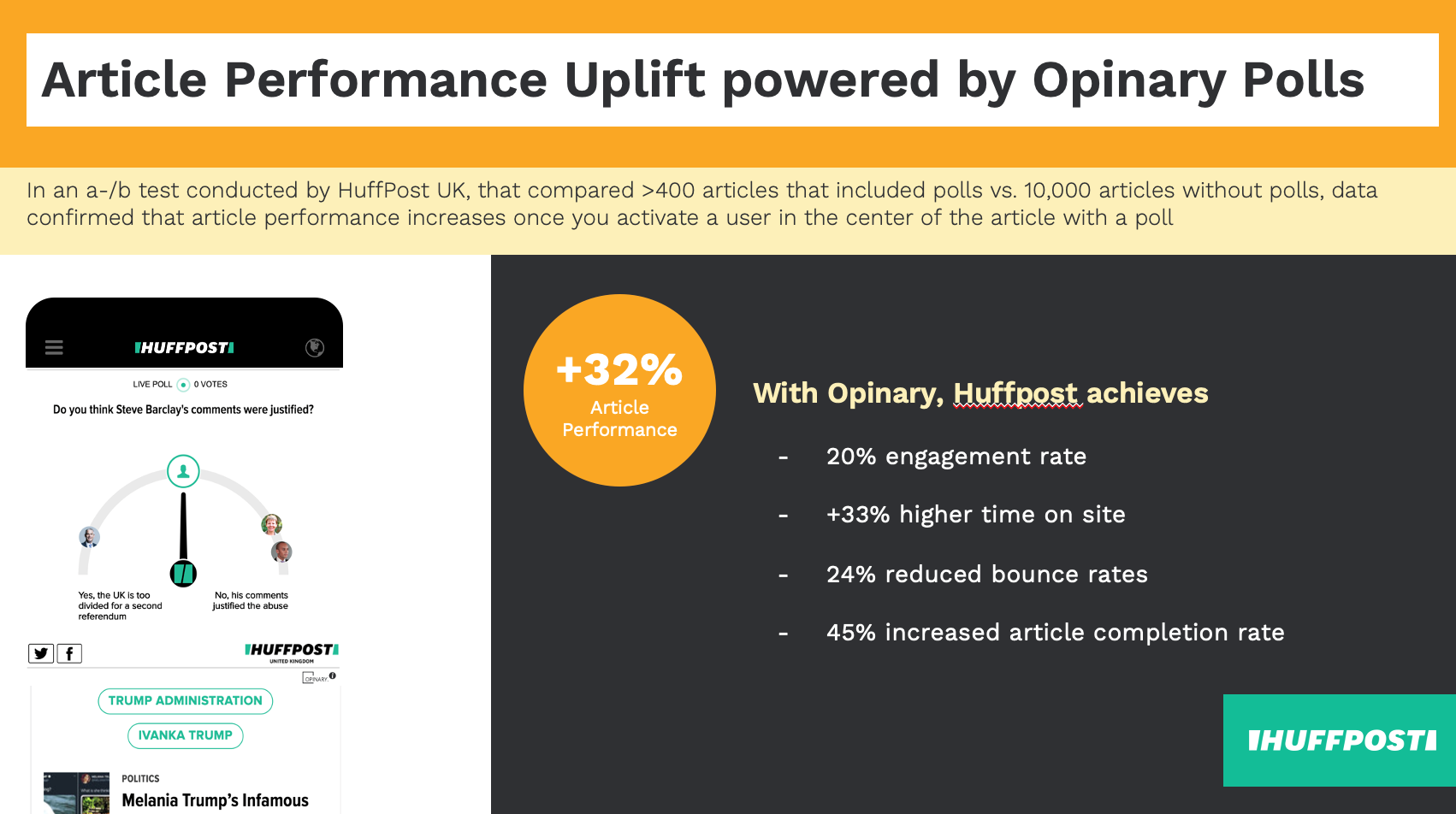
The impending demise of third-party cookies has ushered in a new era that places first-party data at the forefront of effective advertising strategies. As the industry seeks alternatives to maintain personalized targeting without compromising user privacy, the role of first-party data has become pivotal.
In this context, Cornelius Frey, Co-Founder and CEO of Opinary, outlines his company’s approach to collecting and leveraging first-party data through interactive user engagement. That offers not only a solution to the challenges posed by the demise of third-party cookies but also holds the potential to reshape the future of digital advertising.
By seamlessly integrating polling and voting tools into the online experiences of top publishers, amongst other things, Opinary fosters genuine connections with users, producing high-quality data that is willingly shared.
Don’t sleep on the power of first-party data—whether you’re thinking about cookieless environments or not—because you cannot underestimate having direct connections with your audience.
Opinary’s First-Party Data Strategies
Andrew Byrd: Can you tell me about Opinary and how your company works with first-party data? 
Cornelius Frey: Opinary entirely changes the way, quality, and scale of how first-party data is collected: away from prying on users’ behavior to try and infer who they might be or what they might want – and towards building an open, ongoing dialogue with users that they willingly engage in.
This dialogue on publishers’ sites creates a triple impact:
- Better page metrics and audience relationships
- Additional high-quality, non-invasive ad inventory
- A key source of scalable first-party data
AB: Your voting tools are a core part of your business? Why is this an important facet? Does this help with your first-party data assets?
CF: We use polls that ask pertinent questions in the middle of a publisher like, say, NBC, the FT, the Times of London, or Der Spiegel, and have over a quarter of a billion users interact with these every month. Users engage because they have a view and – a core human trait! – they want to see how they compare to millions of other users.
For instance, they will want to see precisely why other readers may also be interested in buying that electric vehicle – and will happily compare themselves on socio-demographic dimensions. Any data we ever collect is actively declared by our users, raising both its quality and privacy compliance compared to existing data solutions in the market.
The Cookieless Concerns
AB: The entire industry is preparing for the complete deprecation of third-party cookies. Why is first-party data critical in preparing for this industry change?
CF: As the pendulum swings away from third-party cookies, publishers have the chance to play a vital role in helping advertisers still run effective, performant campaigns – and regain control and benefit from a more critical position in the value chain, rather than being just the providers of pixels on their page for ad inventory.
This is because their intimate knowledge of their audience – beyond mere contextual signals – can help deliver campaigns targeted in full privacy compliance even after the end of the free-for-all third-party cookie bonanza, for instance, via premium directly sold seller-defined audiences or by enriching their programmatic offering. Publishers have been doing a great job building the pipes for that transition through upgrading their DMP infrastructure, for instance. They must fill those pipes with first-party insights about their audiences at scale. That’s where Opinary audiences come in.
The Publisher Benefits
AB: How are you working with publishers like The Times and Yahoo to use first-party data to enhance their advertising strategies?
CF: Integrating our tools helps these publishers increase the scale of first-party data directly collected by a factor of >3x, as well as the quality: it delivers signals of intent that are so strong that they provide an immediate performance uplift in advertising campaigns enriched by them.
We work with publishers directly and with ecosystem partners like Piano, Adobe, and 1plusX to help lift the potential of first-party data and sell better, more performant campaigns at higher CPMs. Along the way, the engagement we create increases time on site, and we drive newsletter sign-ups and subscription rates by converting highly engaged users post-vote to the publisher’s most relevant offerings.
AB: Any final advice for publishers and advertisers who want to use their first-party data assets to the fullest?
CF: The most promising strategy for using first-party data assets goes to the timeless core of good journalism: engage your audience directly, don’t be afraid of asking them questions, and be open and honest about the excellent value exchange that can happen when you build a direct relationship with your readers, rather than relying on an ecosystem of middlemen. Given where industry and regulatory trends are going, for those publishers embracing this, there may be a bright future for digital publishing around the corner, and we’re happy to be a part of it.

